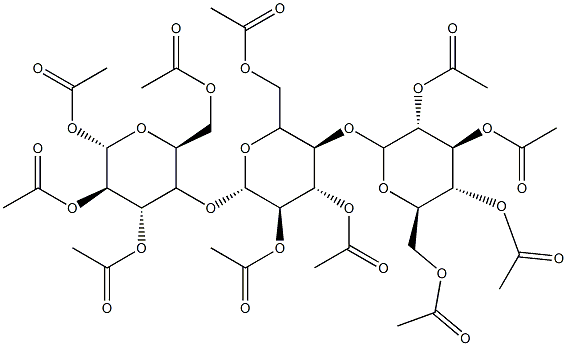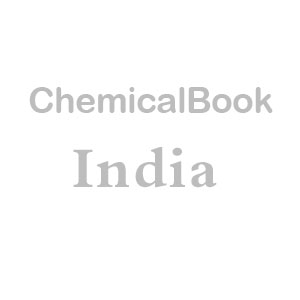Cellulose acetate
- CAS NO.:9004-35-7
- Empirical Formula: [C6H7O2(OH)3-m(OOCCH3)m],m=0~3
- Molecular Weight: 0
- MDL number: MFCD00081496
- EINECS: 246-466-0
- Update Date: 2025-03-10 21:40:31
What is Cellulose acetate?
Chemical properties
Cellulose acetate, white powder, is the general name for the acetic acid esters of cellulose, cellulose pentaacetate, C6H5(OOCCH3)5, cellulose tetraacetate, C6H6(OOCCH3)4 and cellulose triacetate,C6H7O2(OOCCH3)3. Cellulose acetate occurs as a hygroscopic white to off-white, freeflowing powder, pellet, or flake. It is tasteless and odorless, or may have a slight odor of acetic acid.Cellulose acetate is a tough, flexible, slow-burning and long-lasting material used in the production of plastic film for food packaging,magnetic tape, and movie film.
The Uses of Cellulose acetate
Cellulose acetate was used in the fabrication of gold microelectrode for electrochemical monochloramine measurement. Cellulose acetate based membranes are used in the separations in aqueous systems and in reverse osmosis process. It has been reported to be used to desalinate seawater.Cellulose acetate was used for biosensor encapsulation. It was used in the preparation of cellulose acetate nanofibre felt structure, cellulose acetate fibers.
The Uses of Cellulose acetate
CA can be used as a material in packaging, clothing and pharmaceuticals industries. It can also be used in the formation of polymeric electrolyte for the fabrication of electrochemical devices like fuel cells, solar cells and supercapacitors.
Production Methods
Cellulose acetate is prepared from highly purified cellulose by treatment with acid catalysis and acetic anhydride.
Definition
ChEBI: Cellulose acetate is a glucan derivative obtained through the esterification of cellulose by acetic anhydride or acetic acid, resulting in the substitution of some of the hydroxy groups of cellulose by acetyl groups. It is used in a variety of applications including base material for photographic film, clothing, membrane filters, coatings, food packaging, and as a frame material for eyeglasses. It is a glucan derivative and an acetate ester.
General Description
Cellulose acetate (CA) is a class of cellulose based esters which can be produced by a reaction of cellulose with acetic acid and acetic anhydride. It can be used in a variety of forms such as films, membranes, and fibers. It can be used as a biodegradable polymer in medical and automotive applications.
Agricultural Uses
Cellulose acetate is an ester in which cellulose (cotton linters or wood pulp) is treated with a mixture of acetic anhydride, acetic acid and concentrated sulphuric acid. This solution, when treated with water, forms a flocculent white mass of cellulose acetate which is used as a fiber and in lacquers, non-breakable glass and varnishes.
Industrial uses
Cellulose acetate is an amber-colored, transparentmaterial made by the reaction of celluloseand acetic acid or acetic anhydride in the presenceof sulfuric acid.
It is thermoplastic and easily molded. Themolded parts or sheets are tough, easilymachined, and resistant to oils and many chemicals.In coatings and lacquers the material isadhesive, tough, and resilient, and does not discoloreasily. Cellulose acetate fiber for rayonscan be made in fine filaments that are strongand flexible, nonflammable, mildew proof, andeasily dyed. Standard cellulose acetate formolding is marketed in flake form.
In practical use, cellulose acetate moldingsexhibit toughness superior to most other general-purpose plastics. Flame-resistant formulationsare currently specified for small appliancehousings and for other uses requiring this property.Uses for cellulose acetate molding materialsinclude toys, buttons, knobs, and otherparts where the combination of toughness andclear transparency is a requirement.
Safety
Cellulose acetate is widely used in oral pharmaceutical products and is generally regarded as a nontoxic and nonirritant material.
storage
Cellulose acetate is stable if stored in a well-closed container in a cool, dry place. Cellulose acetate hydrolyzes slowly under prolonged adverse conditions such as high temperature and humidity, with a resultant increase in free acid content and odor of acetic acid.
Incompatibilities
Cellulose acetate is incompatible with strongly acidic or alkaline substances. Cellulose acetate is compatible with the following plasticizers: diethyl phthalate, polyethylene glycol, triacetin, and triethyl citrate.
Regulatory Status
Included in the FDA Inactive Ingredients Database (oral tablets). Included in the Canadian List of Acceptable Non-medicinal Ingredients.
Properties of Cellulose acetate
| Melting point: | 230-300℃ |
| Boiling point: | 210 °C |
| Density | 1.3 g/mL at 25 °C (lit.) |
| refractive index | n |
| storage temp. | 2-8°C |
| solubility | The solubility of cellulose acetate is greatly influenced by the level of acetyl groups present. In general, cellulose acetates are soluble in acetone–water blends of varying ratios, dichloromethane– ethanol blends, dimethyl formamide, and dioxane. |
| form | Powder |
| color | White |
| Specific Gravity | 1.3 |
| Odor | at 100.00?%. odorless |
| Merck | 13,1978 |
| Dielectric constant | 3.2-7(0.0℃) |
| Stability: | Stable. Combustible. Incompatible with strong oxidizing agents. |
| EPA Substance Registry System | Cellulose acetate (9004-35-7) |
Safety information for Cellulose acetate
Computed Descriptors for Cellulose acetate
Cellulose acetate manufacturer
ARRAKIS INDUSTRIES LLP
New Products
Methyl (R)-1-Boc-4,4-difluoropyrrolidine-2-carboxylate 2,2-Difluoropropylamine hydrochloride tert-butyl 3-bromoazetidine-1-carboxylate (R)-1-Boc-3-hydroxypyrrolidine DIFLUOROACETIC ANHYDRIDE 2,2-Difluoropropionic acid Diallylamine, 99% Calcium hydroxide, 95% Aluminum oxide, basic 2-Bromophenylacetonitrile, 97% L-tert-Leucine,97% N-Hydroxy-2-methylpropanimidamide 4-(3,4-Dichlorophenyl)-3,4-Dihydro-N-Methyl-1-(2H)-Naphthalenimine (Schiff Base) 2-AMINO-3,5-DIBROMO BENZALDEHYDE [ADBA] L-Glutamic Acid Dimethyl Ester Hcl 10-Methoxy-5H-dibenz[b,f]azepine 5-Cyanophthalide N, N-Carbonyldiimidazole (CDI) Dibenzoyl Peroxide Titanium Dioxide 2-(Methylthio) Benzonitrile Sodium Acetate Anhydrous Allopurinol 1,5-DibromopentaneRelated products of tetrahydrofuran








You may like
-
 CELLULOSE ACETATE 99%View Details
CELLULOSE ACETATE 99%View Details -
 CELLULOSE ACETATE 99%View Details
CELLULOSE ACETATE 99%View Details
9004-35-7 -
 Cellulose acetate, average Mn ~30,000 CAS 9004-35-7View Details
Cellulose acetate, average Mn ~30,000 CAS 9004-35-7View Details
9004-35-7 -
 Cellulose acetate CAS 9004-35-7View Details
Cellulose acetate CAS 9004-35-7View Details
9004-35-7 -
 Cellulose acetate, average Mn ~50,000 CAS 9004-35-7View Details
Cellulose acetate, average Mn ~50,000 CAS 9004-35-7View Details
9004-35-7 -
 Cellulose acetate CAS 9004-35-7View Details
Cellulose acetate CAS 9004-35-7View Details
9004-35-7 -
 Cellulose acetate CAS 9004-35-7View Details
Cellulose acetate CAS 9004-35-7View Details
9004-35-7 -
 CELLULOSE ACETATE Extra Pure CAS 9004-35-7View Details
CELLULOSE ACETATE Extra Pure CAS 9004-35-7View Details
9004-35-7
